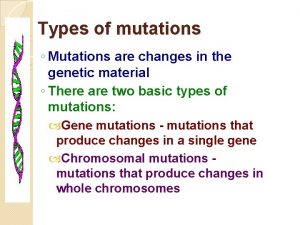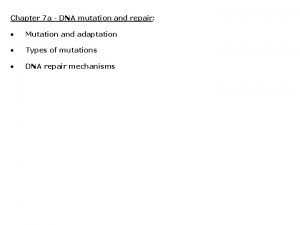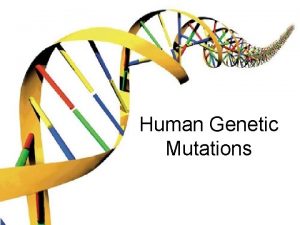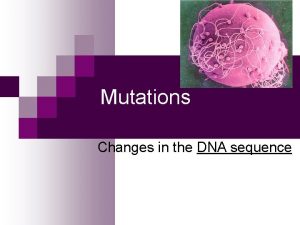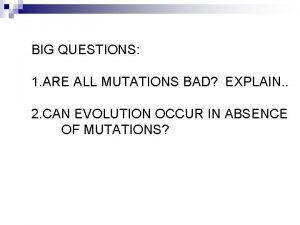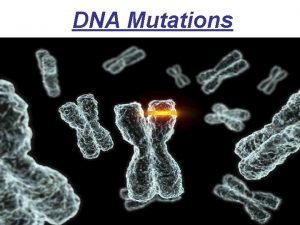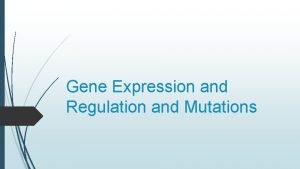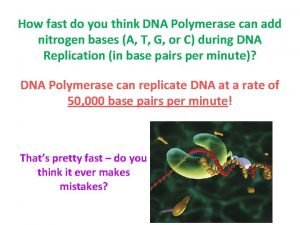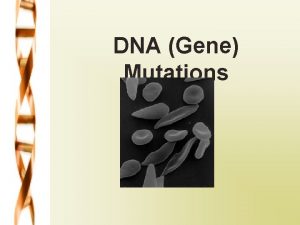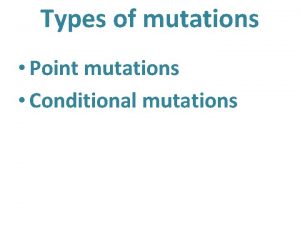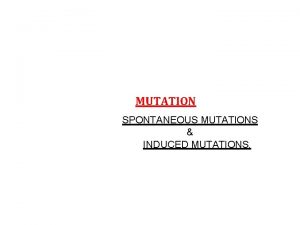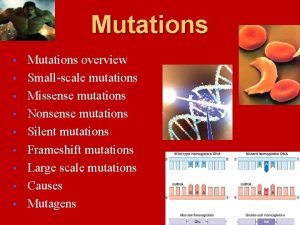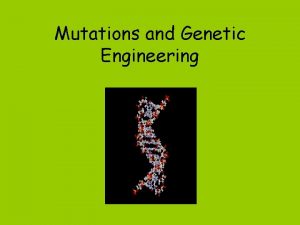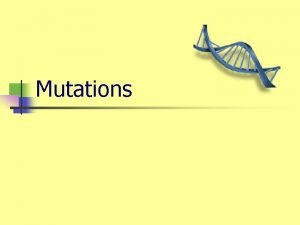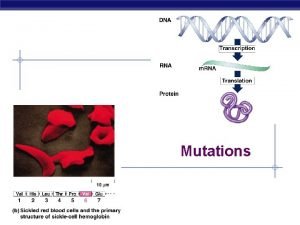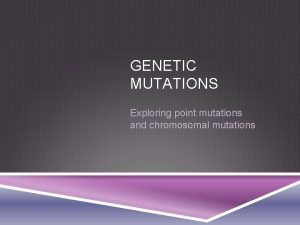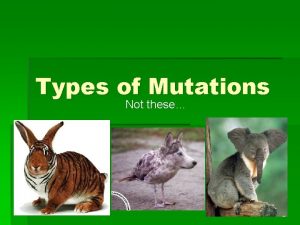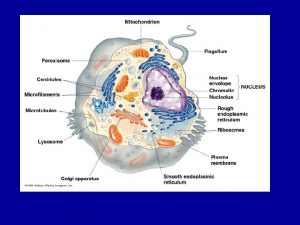Mutations Mutations Types of Mutations Point Mutations occurs










- Slides: 10

Mutations

Mutations

Types of Mutations • Point Mutations – occurs when there is a change with individual nucleotides.

Types of Mutations • Point Mutations – occurs when there is a change with individual nucleotides. Example: Sickle cell anemia is due to a change in a single amino acid in the protein hemoglobin. The codon, GAG is changed to GUG. The amino acid is valine instead of glutamate.

Types of Mutations • Point Mutations – occurs when there is a change with individual nucleotides. • Block Mutations/Chromosomal Mutations – occurs when entire portions of chromosomes are changed.

Block Mutations Occurs during meiosis resulting in the rearrangement of entire blocks of genes. There are four types: 1. Deletion 2. Inversion 3. Translocation 4. Duplication

1. Deletion • A break may occur at two points on the chromosome and the middle piece of the chromosome falls out. The two ends then rejoin to form a chromosome deficient in some genes. Alternatively, the end of a chromosome may break off and is lost.

2. Inversion • The middle piece of the chromosome falls out and rotates through 180° and then rejoins. There is no loss of genetic material. The genes will be in a reverse order for this segment of the chromosome.

3. Translocation • Translocation involves the movement of a group of genes between different (nonhomologous) chromosomes. A piece of one chromosome breaks off and joins onto another chromosome. This will cause major problems when the chromosomes are passed to gametes.

4. Duplication • A segment is lost from one chromosome and is added to its homologue. The chromosome with the segment removed is deficient in genes. Some gametes will receive double the genes while others will have no genes for the affected segment.

